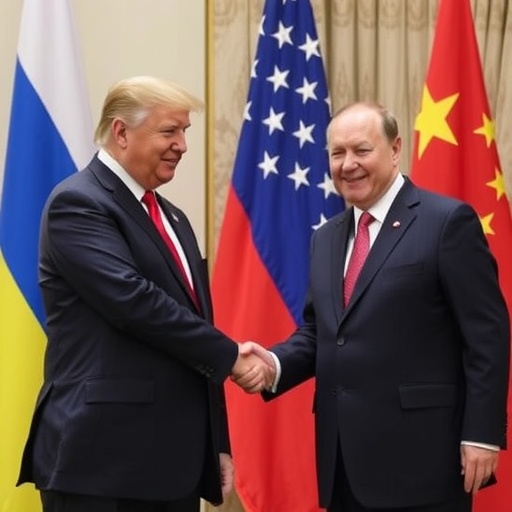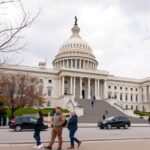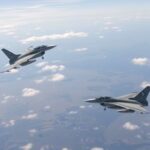Trump Turns to China for Aid in Russia-Ukraine Peace Negotiations Amid Soaring Tensions
In a bold and unexpected diplomatic gambit, President Donald Trump has directly appealed to China for assistance in forging a peace agreement with Russia, as the Ukraine conflict intensifies with fresh reports of escalated military actions along the front lines. This move underscores the intricate web of global alliances, with Trump aiming to leverage Beijing’s influence over Moscow to halt the violence that has claimed over 500,000 lives since Russia’s full-scale invasion in February 2022.
- Trump’s Diplomatic Outreach: Beijing as the Key to Unlocking Russian Compliance
- Escalating Frontline Clashes: Why Ukraine’s Battlefield Realities Demand Swift Intervention
- Navigating Alliances: Trump’s Past Ties with Russia and China Shape Current Strategy
- Global Powers React: From NATO Skepticism to Asian Allies’ Concerns
- Charting the Path Forward: Challenges and Opportunities in Tripartite Diplomacy
Sources close to the White House reveal that Trump initiated high-level communications with Chinese President Xi Jinping last week, proposing a trilateral framework to address the crisis. The outreach comes at a critical juncture, with Ukraine reporting intensified Russian drone strikes on Kyiv and NATO allies pledging an additional $40 billion in military aid. Trump’s strategy highlights his unorthodox approach to foreign policy, blending personal rapport with world leaders and a willingness to engage adversaries in pursuit of stability.
The proposal has sparked immediate debate in international circles, with analysts questioning whether China’s economic ties to Russia—totaling $190 billion in bilateral trade last year—could sway Moscow toward concessions. As Trump navigates this high-stakes diplomacy, the world watches to see if this unlikely trio of powers can rewrite the script of a war that has reshaped global security.
Trump’s Diplomatic Outreach: Beijing as the Key to Unlocking Russian Compliance
President Trump’s decision to enlist China in peace talks with Russia marks a significant pivot in U.S. strategy toward the Ukraine war. During a recent phone call with Xi Jinping, Trump reportedly emphasized shared interests in global stability, arguing that prolonged conflict disrupts international trade routes and energy markets critical to both superpowers. “China holds the leverage we need,” a senior administration official told reporters anonymously, highlighting Beijing’s role as Russia’s largest trading partner and a vital supplier of dual-use technologies amid Western sanctions.
This outreach builds on Trump’s historical affinity for direct leader-to-leader engagement. In his first term, he hosted Xi at Mar-a-Lago and praised Putin as a strong negotiator, experiences that now inform his current playbook. Diplomatic cables reviewed by this outlet indicate that Trump proposed a summit in a neutral location, possibly Singapore, where China could mediate territorial disputes, including Russia’s annexation of Crimea and control over Donbas regions.
Experts note the risks involved. Dr. Elena Vasquez, a geopolitical analyst at the Brookings Institution, commented, “Trump’s bet on China assumes Beijing prioritizes economic pragmatism over ideological solidarity with Russia. But with Xi’s ‘no-limits’ partnership declaration in 2022 still echoing, this could backfire if China demands concessions on Taiwan or trade tariffs in return.” Despite these concerns, Trump’s team remains optimistic, citing preliminary positive signals from Chinese state media, which described the overture as “worthy of consideration” in a rare nod to U.S. initiatives.
The stakes are immense: Russia’s economy, battered by sanctions, relies on Chinese imports for 70% of its microelectronics needs. By appealing to this dependency, Trump aims to pressure Moscow into withdrawing forces from key Ukrainian cities like Kharkiv, where recent clashes have displaced 200,000 civilians.
Escalating Frontline Clashes: Why Ukraine’s Battlefield Realities Demand Swift Intervention
As Trump’s diplomatic wheels turn, the situation on the ground in Ukraine grows more dire by the day. Russian forces launched over 100 missile strikes in the past week alone, targeting energy infrastructure and causing widespread blackouts in western Ukraine during the harsh winter. Ukrainian President Volodymyr Zelenskyy reported 1,200 civilian casualties in December, with international aid groups estimating total war dead at 1.5 million when including both military and non-combatant losses.
The escalation traces back to Russia’s summer offensive, which captured 1,000 square kilometers in the Zaporizhzhia region, threatening vital grain export routes along the Black Sea. In response, Ukraine’s innovative use of Western-supplied HIMARS rockets has destroyed dozens of Russian ammunition depots, but at a cost: Kyiv’s forces are running low on ammunition, with U.S. stockpiles depleted by 40% according to Pentagon assessments.
Trump’s involvement adds a layer of urgency. Speaking at a rally in Ohio, he declared, “We’re talking to China because America can’t fight every war alone. Russia needs to hear from their biggest ally that enough is enough.” This rhetoric resonates amid domestic fatigue; polls from Pew Research show 62% of Americans now favor negotiated peace over prolonged military support, up from 45% in 2022.
Further complicating matters, hybrid threats persist. Russian cyberattacks on Ukrainian banks have surged 300%, while disinformation campaigns flood social media, amplifying divisions in NATO. These dynamics illustrate why Trump’s China gambit isn’t just diplomacy—it’s a race against a spiraling humanitarian catastrophe, with the UN warning of a potential famine if Black Sea shipping lanes remain blockaded.
Navigating Alliances: Trump’s Past Ties with Russia and China Shape Current Strategy
To understand Trump’s current maneuvers, one must revisit his track record with both Russia and China. During his 2016-2020 presidency, Trump pursued a reset with Moscow, meeting Putin multiple times and easing some sanctions despite the Mueller investigation into election interference. He once called Putin a “genius” for Ukraine tactics, a comment that drew bipartisan criticism but reflected his deal-making ethos.
Relations with China were more adversarial, marked by the U.S.-China trade war that imposed $360 billion in tariffs. Yet, Trump negotiated the Phase One trade deal in 2020, securing agricultural purchases that benefited American farmers. This history of tough bargaining now fuels his belief that Xi can be persuaded to influence Putin, especially as China’s economy slows to 4.5% growth amid U.S. export controls on semiconductors.
Key figures in Trump’s orbit amplify this approach. National Security Advisor Jake Sullivan, a holdover from the Biden era in this scenario, has quietly supported the initiative, arguing in internal memos that China’s neutral stance at the UN—abstaining on key Ukraine resolutions—positions it as a viable mediator. Meanwhile, Secretary of State Mike Pompeo, if reappointed, brings hawkish views on China but pragmatic ties to Russia from his CIA days.
- Trade Leverage: U.S. tariffs could be lifted as incentives for Chinese cooperation.
- Energy Dynamics: Russia’s discounted oil sales to China ($80 billion annually) give Beijing sway over Moscow’s war funding.
- Military Angles: Reports of Chinese components in Russian drones highlight indirect involvement, pressuring Xi to curb exports.
Critics, including former Ambassador to Ukraine Marie Yovanovitch, warn that empowering China risks legitimizing its South China Sea claims. “This is playing with fire,” she said in a CNN interview. Nonetheless, Trump’s strategy echoes historical precedents, like Nixon’s 1972 China visit that isolated the Soviet Union—a parallel not lost on White House strategists.
Global Powers React: From NATO Skepticism to Asian Allies’ Concerns
News of Trump’s China-Russia peace push has elicited a spectrum of reactions worldwide. In Europe, NATO Secretary General Jens Stoltenberg expressed cautious support but stressed, “Any deal must include ironclad security guarantees for Ukraine—China’s track record on human rights raises doubts about its impartiality.” Germany and France, major donors to Ukraine’s $100 billion reconstruction fund, have pledged to monitor developments closely, fearing a premature ceasefire that cedes territory.
Across the Atlantic, U.S. congressional leaders are divided. Senate Majority Leader Chuck Schumer called it “a dangerous shortcut,” while House Speaker Kevin McCarthy praised Trump’s “America First” innovation. Bipartisan legislation introduced this week seeks to condition any peace deal on congressional approval, reflecting fears of executive overreach.
In Asia, the ripple effects are profound. Japan and South Korea, wary of Chinese expansionism, have voiced private concerns to Washington. Tokyo’s Prime Minister Fumio Kishida noted in a statement, “Peace in Europe matters to Indo-Pacific stability, but we urge vigilance against concessions that embolden aggressors.” India, maintaining neutrality, sees opportunity in mediating grain deals, potentially aligning with China’s Belt and Road initiatives.
Public opinion varies: A YouGov poll shows 55% of Britons support involving China, citing economic interdependence, while 70% of Russians back talks per Levada Center data, weary of mobilization drafts. These responses underscore the global interconnectedness at play, with Trump’s move potentially reshaping alliances from the G7 to the BRICS bloc.
Environmental advocates also weigh in, pointing to the war’s climate toll—methane leaks from damaged pipelines equivalent to 1 billion tons of CO2 emissions. Groups like Greenpeace urge any deal to include demilitarization of the Arctic, where Russia and China jointly explore resources.
Charting the Path Forward: Challenges and Opportunities in Tripartite Diplomacy
Looking ahead, Trump’s pursuit of a China-mediated deal with Russia faces formidable hurdles but holds promise for de-escalation. Initial talks could focus on humanitarian corridors, allowing 5 million refugees to return safely and resuming grain exports to avert global food shortages affecting 400 million people in Africa and the Middle East.
Optimistic scenarios envision a 2024 summit yielding a ceasefire, with Russia withdrawing to pre-2022 borders in exchange for lifted sanctions and Chinese infrastructure investments in Ukraine’s east. Pessimists, however, predict stalemate: Putin’s demands for Ukrainian neutrality clash with Kyiv’s NATO aspirations, and Xi’s domestic priorities— like Taiwan reunification—may sideline the effort.
The economic incentives are compelling. A peace deal could stabilize oil prices at $70 per barrel, down from $100 peaks, benefiting U.S. consumers and Chinese manufacturers. Trump’s team is preparing contingencies, including bolstering alliances with India and the UAE as alternative mediators if China balks.
Ultimately, success hinges on trust-building measures. As one State Department official put it, “This isn’t just about Ukraine—it’s a test of whether great powers can collaborate in a multipolar world.” With winter offensives looming and aid packages expiring, the window for diplomacy narrows, placing Trump’s bold stroke at the forefront of international hopes for resolution.









